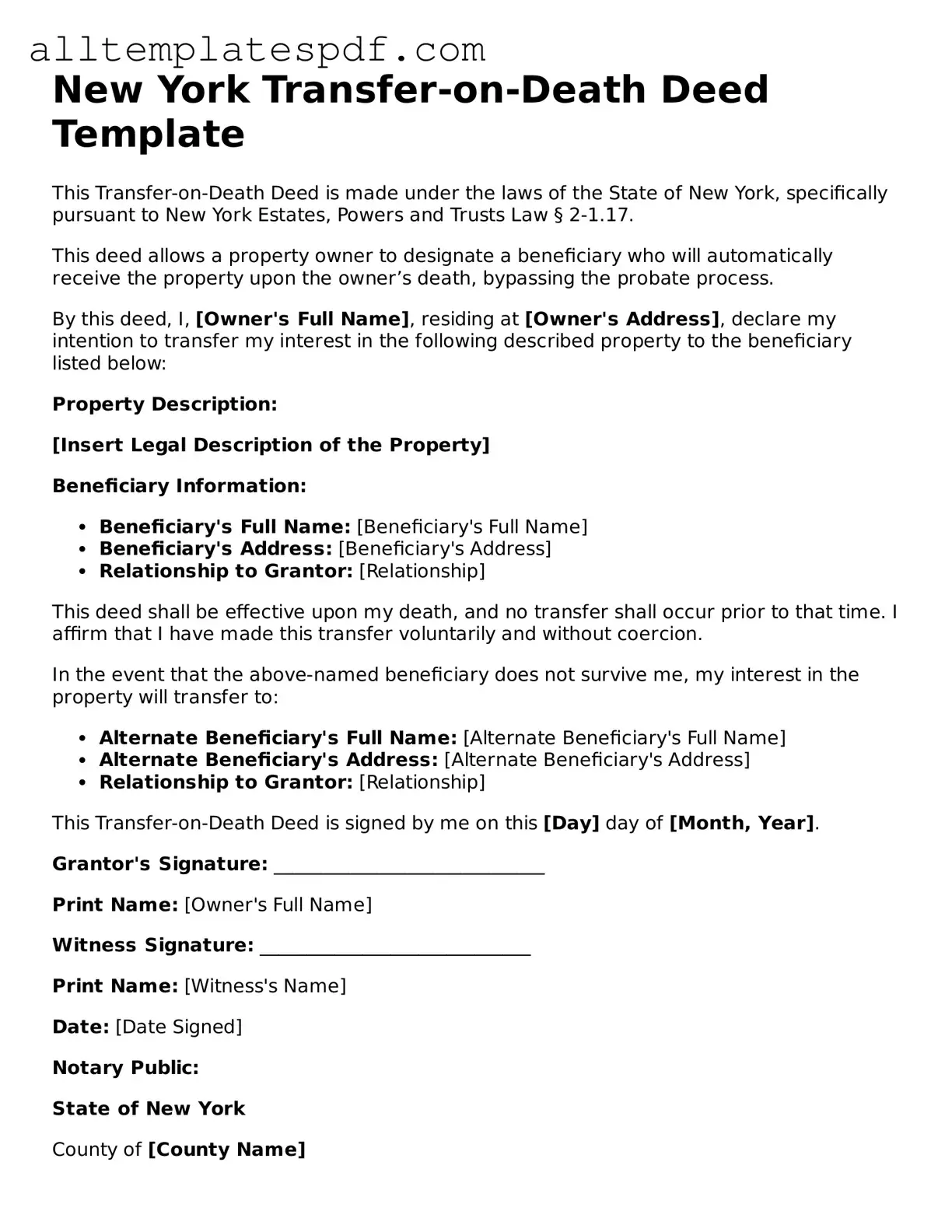Filling out the New York Transfer-on-Death Deed form can be a straightforward process, but many people make common mistakes that can lead to complications. One frequent error is not including all required information. Each section of the form must be completed accurately. Missing details can result in delays or even the rejection of the deed.
Another common mistake is failing to properly identify the property. The deed must clearly describe the property being transferred. Ambiguities or vague descriptions can create confusion and lead to legal disputes later on. It is essential to include the correct address and any relevant property identification numbers.
Many individuals overlook the importance of signatures. The Transfer-on-Death Deed must be signed by the owner(s) of the property. If the deed is not signed or if it is signed by someone who is not the owner, it will not be valid. Additionally, witnesses may be required, depending on the specific circumstances.
People often neglect to consider the implications of the deed on their estate planning. A Transfer-on-Death Deed bypasses probate, but it may not be the best option for everyone. Consulting with an estate planning professional can provide valuable insights and help avoid unintended consequences.
Another mistake is not recording the deed with the county clerk’s office. For the deed to take effect, it must be filed in the appropriate jurisdiction. Failing to record the deed means it may not be recognized, and the intended transfer may not occur as planned.
Some individuals mistakenly believe that the Transfer-on-Death Deed can be revoked easily. While it is possible to revoke the deed, doing so requires following specific procedures. Not understanding these requirements can lead to confusion and unintended transfers.
People sometimes forget to inform their beneficiaries about the deed. Communication is crucial. Beneficiaries should be aware of the deed’s existence and understand their rights and responsibilities. Lack of communication can lead to misunderstandings and disputes among family members.
Another oversight is not considering tax implications. While a Transfer-on-Death Deed can simplify the transfer process, it may have tax consequences that need to be addressed. Consulting with a tax professional can provide clarity on potential liabilities.
Lastly, individuals may fill out the form without fully understanding the laws surrounding Transfer-on-Death Deeds in New York. Each state has its own regulations, and it is important to be aware of these rules to ensure compliance. Taking the time to research or seek guidance can prevent costly mistakes.
